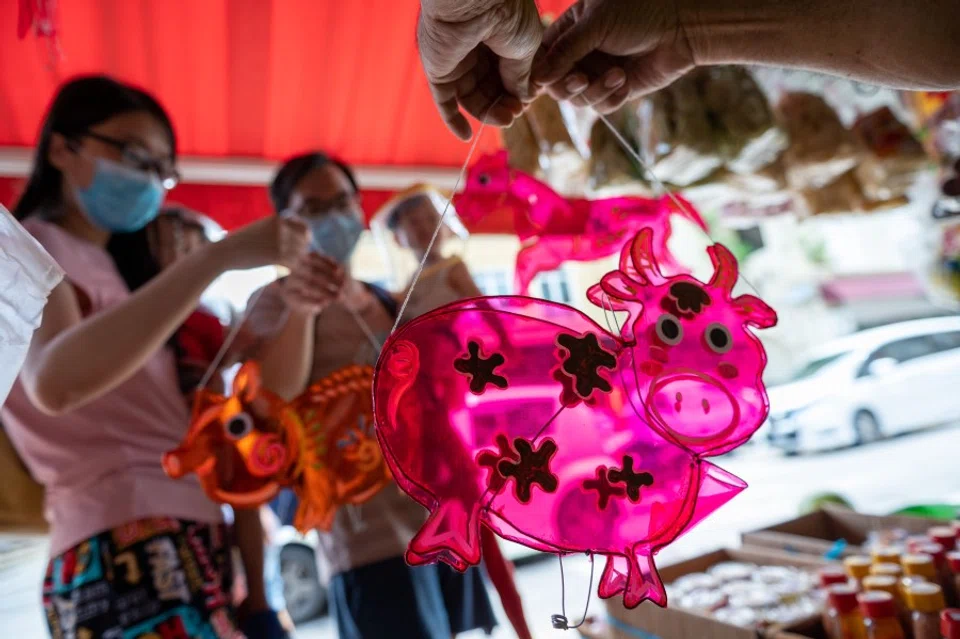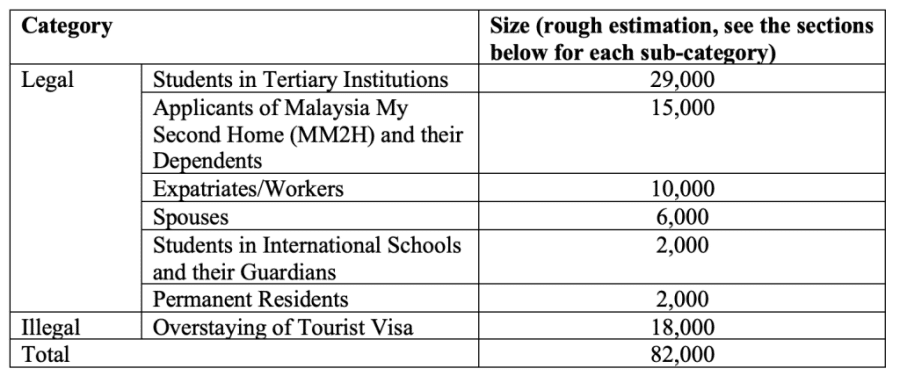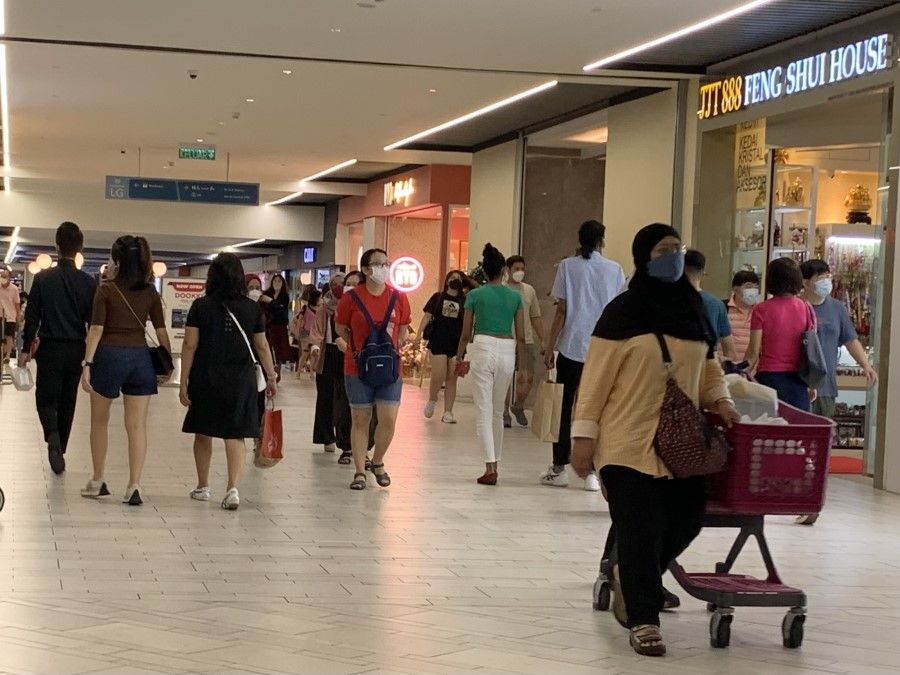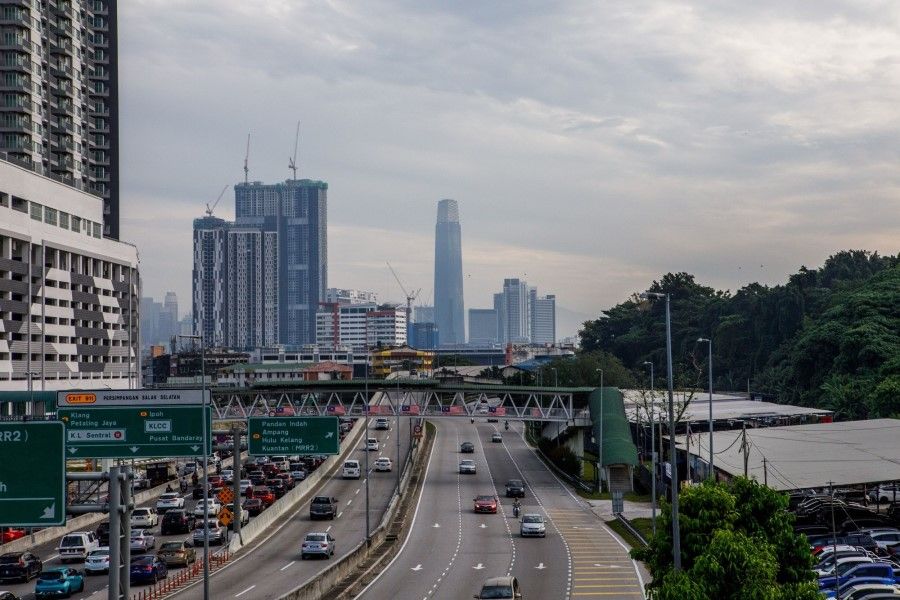Upward trend of new Chinese migrants in Malaysia likely to continue

The term xin yimin (新移民 new China migrants) refers to the Chinese migrants of the latest wave - those who ventured out of China since the enactment of Deng Xiaoping's "reform and opening up" policies in the late 1970s.
The recent waves of xin yimin could be characterised as being of a mobile, circulatory and transitory nature, and are fundamentally different from early Chinese migration to Southeast Asia. Today, out of the 11 Southeast Asian countries, Singapore is one of the few places where the xin yimin can easily obtain legal naturalisation. However, while the xin yimin often stay in this region for a sustained period, they are rarely permanent settlers.
Malaysia has a sizeable xin yimin population, yet not much research has been published regarding this community, with the exception of a unique aspect of the xin yimin phenomenon in Malaysia - the presence of the ethnic Hui xin yimin.
The Hui, who are mostly Chinese Muslims, find Malaysia ideal for a combination of reasons - it is a society in which the practice of their religion, Islam, is widely encouraged and it has sufficient Chinese cultural space for them to live comfortably. The Hui were in fact the xin yimin pioneers in Malaysia.
...students from PRC are today abundantly found in both public and private institutions across different states in Malaysia, including Sabah and Sarawak.
Trends and numbers
It is difficult to estimate the size of the xin yimin community in Malaysia as there is no single definition of the term. However, broadly speaking, xin yimin consists of three categories: 1) PRC citizens who have successfully become naturalised citizens of Malaysia; 2) PRC citizens who are staying in Malaysia legally for a sustained period of time, such as students, expatriates, workers, and so forth; and 3) PRC citizens who are staying in Malaysia illegally, mostly by overstaying their visas.
Given Malaysia's strict naturalisation process, the first category is negligible. Putting the second and third categories together, a rough estimation of the number of xin yimin in Malaysia is 82,000 (see Table 1).

Students in tertiary institutions
According to the Ministry of Higher Education of Malaysia, as of 2021, the number of PRC students in Malaysia was 28,593. This is a sharp increase from 10,775 in 2015, and a sign of Malaysia effectively displacing Indonesia and Bangladesh as the largest source country of international students in Malaysia's higher education institutions (see Table 2).
...the recent deterioration of China's relations with the Western world has had an impact as well, and more and more PRC students are starting to look for alternatives to Western universities.
Moreover, compared to the 1990s and 2000s, when PRC students were generally concentrated in private universities and colleges within the Klang Valley region (the area surrounding the metropolitan Kuala Lumpur), students from PRC are today abundantly found in both public and private institutions across different states in Malaysia, including Sabah and Sarawak. Due to their relatively higher ranking and prestigious status, these public universities are especially popular among PRC students.
This is due to several factors. The relatively affordable price and decent quality of Malaysia's higher education, the short distance between Malaysia and China, and the widespread use of the English language are intrinsic appeals to the PRC students. Moreover, the recent deterioration of China's relations with the Western world has had an impact as well, and more and more PRC students are starting to look for alternatives to Western universities. Conversely, the Malaysian government and universities have also been keen to tap into the huge PRC student market, having put many years of effort into marketing themselves.

Malaysia My 2nd Home (MM2H) scheme holders
Malaysia My 2nd Home (MM2H) is a scheme designed to attract foreign citizens (primarily wealthy retirees) to bring financial capital (in the form of bank fixed deposits), investment and consumption to Malaysia. MM2H holders are given a ten-year renewable visa, which almost makes them permanent residents of the country. MM2H holders, however, are not allowed to be employed in any form by either the public or private sectors in Malaysia, but are allowed to buy properties and open up businesses to generate income and employment.
...except for a few selected sectors, Malaysia has not opened its general labour market to China's workers.
When MM2H was first implemented in the early 2000s, the target population was Japanese retirees. However, the rapid rise of the Chinese economy and its affluent middle class have led to PRC citizens becoming the largest group of MM2H holders. According to the MM2H agency, as of 2019, the total number of accumulated MM2H holders was 48,471. Among them, 30.5% were PRC citizens (14,541). Japan was a distant second (11.3%).
In 2021, the Malaysian government revised the MM2H criteria with a higher threshold. The revised scheme affects both existing and potential applicants, and the number of MM2H applicants is expected to decline. However, due to the ongoing COVID-related travel restrictions, it is difficult to ascertain the impact of this new scheme on the current and future applicants from the PRC.
Expatriates/workers
Malaysia issues several categories of visas for foreigners to be employed legally within the country, ranging from professional visit pass (mostly for skilled professionals/ expatriates) to employment and temporary employment pass (generally for low-skilled workers).
The number of PRC expatriates/workers has increased over the decades, but it noticeably peaked around 2017-2018. In 2017, the Malaysia's government disclosed that out of 1.7 million foreign workers in Malaysia, PRC workers accounted for 15,399.
In the early 2000s, there were tentative talks about opening the general labour market of Malaysia to PRC workers, but up until now, except for a few selected sectors, Malaysia has not opened its general labour market to China's workers. Therefore, almost all legally employed PRC citizens are likely to be holders of the professional visit pass. However, an unknown portion of them certainly use this pass to work as labourers, especially in the construction sector.
The number of PRC expatriates/workers has increased over the decades, but it noticeably peaked around 2017-2018. In 2017, the Malaysia's government disclosed that out of 1.7 million foreign workers in Malaysia, PRC workers accounted for 15,399. In 2019, that figure had fallen to 13,305 (out of 1.99 million foreign workers).
On the other hand, the figures for PRC expatriates/workers provided in the Annual Foreign Investment Country Guide: Malaysia, compiled by the Ministry of Commerce of China, were somewhat higher (Table 3), although the declining trend since 2017-2018 can be similarly observed. Reasons for the decline could be partly political (Malaysia's political transition in 2018 that created some initial uncertainties), economic (China's slowing economy) and the pandemic (especially in 2020 and after).

It is safe to assume that the data from both China and Malaysia only include workers with legal status. There are however occasional reports of PRC workers being illegally employed (and exploited) in Malaysia, especially in construction projects contracted to private enterprises from China. The exact number of illegal workers, however, is difficult to calculate. Nevertheless, it is very unlikely that the number of illegal PRC workers exceeds the legal one, and based on the declining press reports on this issue, the trend suggests that the number of illegal PRC workers in Malaysia has lessened, although they are by no means completely absent.
China is the seventh largest source country for PRs in Malaysia.
Spouses, students in private international schools and their guardians, permanent residents
PRC spouses of Malaysian citizens (mostly wives) staying in Malaysia are estimated to number around 6,000. They possess a "long-term social visit pass" for their stay, which is renewable every five years. Additionally, they are allowed to work, but subject to certain conditions.

Private international schools have sprung up in Malaysia in the past few years and have attracted many affluent families within Malaysia and internationally. These international schools can issue their own student visas to international students. As of 2021, there were 924 PRC students attending these schools using student visas, ranking second to South Korea, which has 1,717 students. Given that most PRC students are below the legal age of 18, they would likely have at least one guardian (parent or grandparent, widely known as peidu mama or peidu nainai) staying with them. As such, the total number of these students and guardians is estimated to be 2,000.
As of June 2022, 2,346 PRC citizens have obtained Permanent Resident (PR) status in Malaysia. China is the seventh largest source country for PRs in Malaysia.
Illegal xin yimin
Overstaying their visas is one of the main ways for PRC citizens to reside in Malaysia illegally. In 2004, a deputy consul at the Chinese embassy in Malaysia suggested that possibly a whopping 185,000 PRC citizens had overstayed their visa periods in Malaysia. However, it was later clarified that the number could be between 20,000 and 40,000. Most of these overstayers came from rural areas in China and were deceived by fraudulent companies and agents. They were promised legal working permits and manual labour work in Malaysia but suffered serious exploitation once they arrived.

Other than manual work, a few of these illegal PRC citizens were also entrepreneurial enough to open small businesses on their own, often as food stall operators, hawkers and small traders. Female prostitution is also another line of illicit/illegal work. Not all prostitutes are illegal; some have proper visas such as student pass or social visit pass. However, many of them fall victim to criminal gangs who deceive and manipulate them into prostitution.
As China becomes richer, the outward drive for its poorer citizens to do manual labour legally or illegally outside the country also declines.
In 2019, the director-general of the immigration department of Malaysia disclosed that between 2016 and 2018, 18,341 PRC citizens who entered Malaysia via tourist visas did not have exit records. This could be taken as a rough estimation of the number of PRC citizens staying illegally in Malaysia. Despite the lack of consistent data, the long-term trend is almost certainly a declining one.
As China becomes richer, the outward drive for its poorer citizens to do manual labour legally or illegally outside the country also declines. Furthermore, the Chinese government has always warned its citizens against taking up illegal jobs in Malaysia, and both Malaysia and China have collaborated to resolve the issue.
Organisations and networks
In terms of formal organisations, xin yimin organisations are mostly concentrated in two sectors: the business sector and the student body (Table 4).

The most important and authoritative xin yimin business organisation in Malaysia is the China Enterprises Chamber of Commerce in Malaysia (CECCM), founded in 2002. Its secretariat is housed at the Bank of China in Malaysia and its current chairperson is the president of Malaysia's Bank of China.
The chairperson of CECCM, by convention, always comes from the banking industry. It has over 250 members (corporate members only, individuals as associate members), and a majority of the membership consists of China's state-owned enterprises (SOEs). CECCM maintains close ties with the Chinese embassy, particularly its trade and economic department.
It has two autonomous branches: Northern Malaysia (Penang) and Sarawak. It serves as a platform for the PRC's SOEs to discuss business collaborations and also as a channel of interaction with relevant government departments of Malaysia. Other than business activities, it also organises charity and corporate social responsibility events on behalf of its members.
A new phenomenon in Malaysia is the rise of various PRC provincial and regional business associations, consisting of PRC business entities or persons from the same province or region (such as Hebei, Shandong, etc).
One of the "non-mainstream" xin yimin business organisations in Malaysia is the China Enterprises Association of Malaysia (CEAM). Founded in 2015, it caters to China's small and medium enterprises (SMEs) in Malaysia, and currently has a membership of 160 SMEs. The founding of CEAM was somewhat of a contentious affair, especially with the presence of CECCM. On top of that, it was not officially endorsed by the Chinese embassy in its early years. However, in recent years, CEAM has been accepted as the secondary xin yimin business organisation by the Chinese embassy.
A new phenomenon in Malaysia is the rise of various PRC provincial and regional business associations, consisting of PRC business entities or persons from the same province or region (such as Hebei, Shandong, etc). As of today, there are eight of them. These organisations provide new linkages between Malaysia and different provinces of China, beyond Guangdong and Fujian.

For PRC students, the major organisation is the China Students Association Malaysia (CSAM). There have been disputes over its founding year (2002 or 2008) but it was formally registered in 2013 in Malaysia, serving as the national organisation connecting all PRC student associations in over 20 Malaysian higher education institutions (public and private, mostly in the Klang Valley).
Overall, despite the pandemic temporarily changing migration patterns, the number of xin yimin in Malaysia is expected to increase.
CSAM also serves as a network for taking care of PRC students, liaises with the Chinese embassy (supporting embassy activities such as festivals of leaders' visits), and organises social, educational, and youth exchange activities between Malaysia and China. Another student-related organisation, although not directly, is the Malaysia Association of China Students Alumni (MACSA). Founded in 2012, it has about 1,000 members. These are PRC citizens who studied in Malaysia's universities and have stayed on to work in Malaysia after graduation.
The president of MACSA (Huang Bin) also founded a non-governmental organisation (NGO) known as the Malaysia China Welfare Advisory Society to help distressed PRC citizens in Malaysia. It has a cooperative relationship with the consular protection department of the Chinese embassy and operates a hotline and a WeChat account. The Malaysia China Welfare Advisory Society has been praised by the Chinese government for being exemplary in providing assistance to xin yimin.
However, the comfort that the xin yimin take in the sizeable Malaysian Chinese community also suggests that most of the xin yimin have an asymmetrical pattern of interaction with the broader Malaysian society.
Implications
Overall, despite the pandemic temporarily changing migration patterns, the number of xin yimin in Malaysia is expected to increase. Most xin yimin find Malaysia a comfortable place to live in due to its sizeable ethnic Chinese community.
As a xin yimin said, "There are so many Chinese that you can integrate into the society easily." In fact, xin yimin-styled "Chinatowns" have emerged in Kuala Lumpur such as Nanjing Street at Sunway Velocity Mall.
However, the comfort that the xin yimin take in the sizeable Malaysian Chinese community also suggests that most of the xin yimin have an asymmetrical pattern of interaction with the broader Malaysian society. Apart from the Hui, most xin yimin have relatively limited interaction with the non-Chinese communities in Malaysia.

In this sense, whatever impact that the xin yimin may create in the future would be first absorbed by the Malaysian Chinese community - the community that is effectively a buffer between the xin yimin and other circles of Malaysian society. So far, the ethnic Chinese do not perceive the xin yimin as a threat, nor does their presence significantly shape the way they practise their culture.
Populist fear of large-scale Chinese "colonisation" that may undermine the local Malay majority and upset the delicate balance is an easily exploitable myth.
Some Malaysians are worried that the xin yimin are economic competitors to the local population and that they do not bring economic benefits. A Malaysian academic once commented that Malaysians may "not be comfortable with a glut of foreigners coming to Malaysia and potentially doing business or eating into the market. If this happens, it may strain the relations between Malaysians - regardless of race - and Chinese nationals".
However, the economic impact of the xin yimin in Malaysia has never actually been properly studied. While they could certainly bring competition to the locals and may not provide economic spillover effects, they could generate consumption, employment, capital inflows and new business opportunities for Malaysians.
Finally, Malaysian politics is hypersensitive to ethnic issues and there is latent anxiety, especially among the Malays, that the xin yimin will upset the delicate ethnic balance in the country. The asymmetrical pattern of interaction between the xin yimin and the Malaysian society suggests that outside of the ethnic Chinese circle, much is unknown about this community.
Populist fear of large-scale Chinese "colonisation" that may undermine the local Malay majority and upset the delicate balance is an easily exploitable myth. Furthermore, anti-xin yimin fake news has also emerged after 2018. Some insensitive xin yimin have also been oblivious to sensitive historical and ethnic issues in Malaysia, and may behave in ways that fuel suspicion and hostility.
Over the last 20 years, the xin yimin have become more proper (with fewer illegal xin yimin), organised and resourceful. Once the pandemic-related restrictions are lifted in China, the upward trend of the xin yimin in Malaysia is likely to resume.
In one sense, this is the real manifestation of the "people-to-people exchanges" between Malaysia and China and it should not be feared. Rather, the xin yimin's potential to contribute to the well-being of Malaysian society and bilateral ties should be harnessed and welcomed. Nonetheless, more efforts to understand and study their potential social, cultural, economic, and even political implications are needed.
This article was first published as ISEAS Perspective 2022/94 "Xin Yimin in Malaysia: Trends and Implications" by Ngeow Chow Bing.
